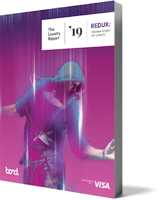Bond
Cracking the Employee Experience Code
Employees are the face of your brand. They are the difference between a “good experience” and a “great or differentiated experience”—they are the ones that form emotional bonds, and bring the brand promises to life. Numerous studies, have shown that a positive interaction between a customer and an employee results in enhanced brand perception, likelihood to increase spend and more willingness to forgive brand missteps—small and large.
Bottom line: employees can’t be replicated.
 Get personal
Get personal
If you want successful customer experience (CX), it is imperative to consider the employee experience first. In fact, as research by Jacob Morgan found, brands investing in employee experience (EX) had 4× the average profit and more than 2× the average revenue of those who did not make it a priority. But where do you start? Here at Bond we’re often tasked by our clients with cracking the EX code.
Ultimately the foundations of EX are very simple; they start with a genuine understanding of your employee community. We apply our engagement mapping process to identify the moments that matter most and to ensure companies go beyond age and gender and get to know the person vs. the persona. If you understand your employees’ unique ambitions, values and purpose, you can connect them directly and deeply to your brand values.
From there, zero in on key EX strategies that leverage and incorporate data sources, loyalty mechanics, human-centred design, technology and training to transform your culture and foster advocacy. Each of these affect specific levers that are critical in the success of employee engagement: ensuring that employees are skilled, building an engagement habit and creating teams that are ready to deliver the desired experience.
How your employees show up for each other permeates into the experiences they will deliver to your customers. As “The Power of Habit” by Charles Duhigg identifies, more than 40% of actions performed each day aren’t actually decisions—they are habits, and this is why looking first at how your employees interact with one another is critical to successful CX. It is in this day-to-day routine that habits are formed. Once you have engrained behaviours that reflect your core brand values into how your employees interact with each other, they will naturally deliver the same approach to the interactions they have with your customers.

Authenticity is key
I cannot stress enough the importance of ensuring that every EX initiative you undertake is intrinsically linked back to your brand, and that each is genuinely and earnestly tied to improving your employees’ day-to-day experiences.
It’s not enough to simply articulate and implement a set of EX policies with no follow-through. The brand values you want to deliver to your customers must be lived and breathed, at all levels of the organization, and used as litmus tests for the decisions we make—not only for customers, but first for your employees.
It is important that these strategies are treated with the gravity they deserve and receive company-wide buy-in. As with all change transformation, EX requires strong leadership with the C-suite leading the charge and the principles being embraced and emulated across all management levels.
Companies can often fall into the short-term trap of focusing on the numbers, and they forget about the human aspect of their CX initiatives, both from an employee standpoint and even more ironically, from a customer standpoint. But when you look to hugely successful brands like Starbucks, where a customer study showed that over 85% of the company’s brand affinity is driven by the way they treat their employees, you can clearly see the correlation between authentic employee experience and tangible, financial results.
Break down the silos
There are a few mistakes we often see that threaten the successful delivery of EX. The most common can be separated into two points—internal and external delivery. Internally, we often see HR and EX being boxed together rather than EX being viewed and embraced as a company-wide initiative. Similarly, moving to the external side of the business, companies separate their brand and customer experience from EX leading to disparate experiences for all. All aspects of your brand need to be considered together in order to ensure employees are fully engaged; the time for silos has long passed. Companies need a clear course to navigate, bringing together the expertise, the experience and the people together to deliver a unified brand—internally first, and then directly to the customers.
Today’s employees want more
Based on research from The Loyalty Report, we identified new currencies of loyalty that can increase customer engagement by creating a sense of community, engendering meaning, and feeling acknowledged and recognized. This echoes what is happening in EX design: as the recent Mercer Report into Global Talent Trends found, employees—particularly those in the younger talent pool—are increasingly looking for fun, purpose, growth and authenticity.[1]
that can increase customer engagement by creating a sense of community, engendering meaning, and feeling acknowledged and recognized. This echoes what is happening in EX design: as the recent Mercer Report into Global Talent Trends found, employees—particularly those in the younger talent pool—are increasingly looking for fun, purpose, growth and authenticity.[1]
Your employees are, and always will be, your first and most important customers. When they are embedded in, and believe in, your brand values, the resulting customer experience and business impact will accelerate your brand to success.
[1] https://www.mercer.com/our-thinking/career/global-talent-hr-trends.html